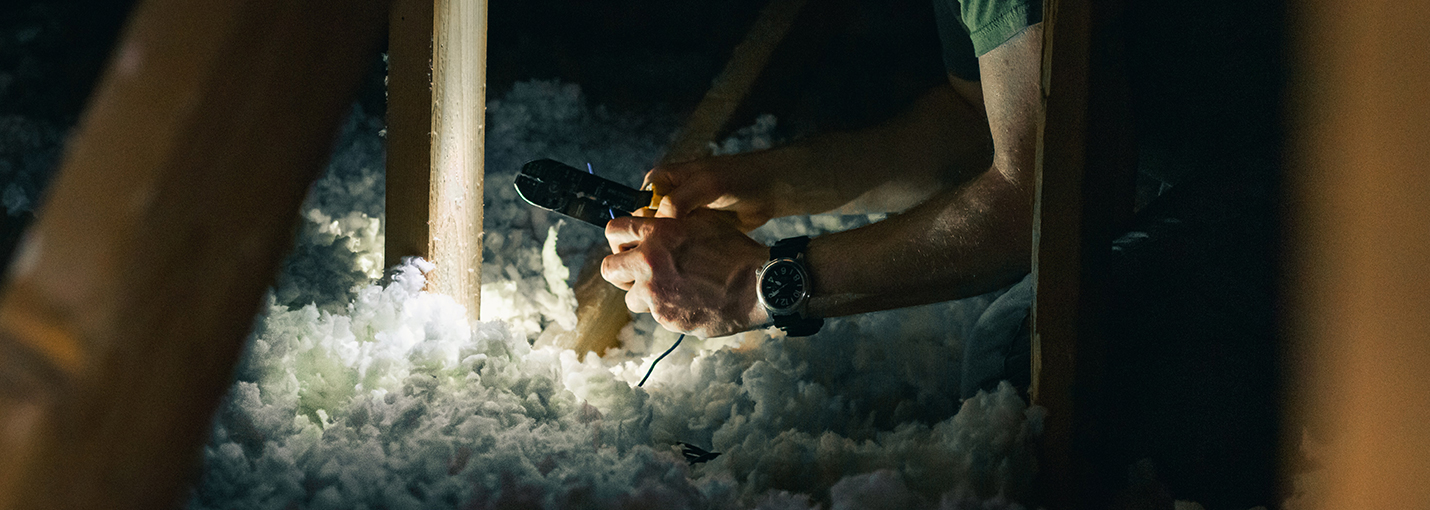Although it was discovered that asbestos was dangerous in the 1920s, authorities did not ban the use of asbestos in insulation until the late 1980s. If your home has asbestos insulation, it could damage your health.
To ensure your home is safe, you need to know the difference between cellulose and asbestos insulation. Keep reading for a complete guide on spotting the differences between these two kinds of insulation materials.


Why Do You Need To Know The Difference Between Cellulose And Asbestos Insulation?
Asbestos is a natural mineral and fibrous silicate. Asbestos was frequently used as insulation for buildings during the construction process until it was discovered that asbestos was dangerous. Asbestos can cause the following conditions:
- Asbestos irritates the lungs, leading to scarring and hardening the lung tissue known as asbestosis.
- Asbestos can cause mesothelioma, a type of cancer that occurs in the lungs.
- Asbestos can cause pleural thickening, where the lung lining thickens and swells.
To ensure that you are safe in your home and not exposed to the risks of asbestos exposure, you must determine whether your insulation is cellulose or asbestos.
How To Tell The Difference Between Cellulose And Asbestos Insulation
Here are some of the critical differences between cellulose and asbestos insulation that can help you to determine whether your living areas are safe. However, to be certain your home is safe, you should call a professional who will give you an expert opinion on whether your insulation contains asbestos.
What Are The Types Of Asbestos Insulation?
To make spotting asbestos insulation simpler, it can be helpful to know the different types of asbestos insulation materials:
- Loose-fill insulation – asbestos loose-fill insulation consisted primarily of harmful materials and was designed to fill wall cavities. This insulation material consists of loose fibers, which can be easily breathed in when dispersed in the air.
- Asbestos wrapping – this kind of insulation is designed to wrap around pipes and looks similar to cardboard. Asbestos wrapping ages and starts to break down, and the particles from the asbestos wrapping could get into your lungs.
- Asbestos blocks – these blocks of asbestos can look like polystyrene or styrofoam. They consist of almost 100% asbestos. When asbestos blocks are trimmed and cut, harmful asbestos disperses into the air. Asbestos blocks are usually glued onto walls to provide insulation.
- Spray-on asbestos insulation – spray-on asbestos consists of around 80% asbestos. Usually, spray-on asbestos coats ceilings and pipes. This insulation material can be hazardous if damaged, as large amounts of dust will be propelled.
What Are The Types Of Cellulose Insulation?
Cellulose insulation consists of recycled materials – primarily old newspapers and denim, which are then treated with chemicals to make it fireproof and to help prevent pest infestations. Cellulose insulation is safe and frequently used in the modern construction industry. Cellulose insulation comes in many different insulation materials, which include:
- Wet-spray cellulose – this kind of cellulose insulation is blown into the walls using a hose moistened with water. This insulation method is often used before placing drywall during the construction process.
- Dry cellulose – this kind of cellulose insulation can be blown in or filled in and packed tightly to ensure noise reduction and heat retention.
Cellulose is the safest kind of insulation when compared with fiberglass and asbestos insulation.


Does The Color Of Your Insulation Matter?
What does the color of your insulation mean? Can it indicate whether your insulation contains asbestos or not? Sadly, the color of your insulation cannot help you to determine whether your insulation materials are harmful or not.
Have You Been Exposed To Asbestos?
If you have been exposed to asbestos without knowing the risks and are now suffering from health issues, you could be entitled to compensation.
The Law Offices of Justinian C. Lane are helping asbestos victims to get justice and the compensation they deserve. If you are suffering from an asbestos-related illness, reach out today to find out if you can claim compensation.
AsbestosClaims.Law
AsbestosClaims.law is your comprehensive resource for all things asbestos. We hope this information helps you.
If you believe that your home was contaminated with asbestos, you could be entitled to significant compensation—money you could use to cover the costs of asbestos removal services, pay for medical treatment, and preemptively protect your physical well-being.
In addition to legal claims, veterans disability, social security and employment protection like workers compensation, FELA and The Jones Act for maritime workers, there are asbestos trusts that have been set up to compensate those harmed by asbestos without having to file a lawsuit.
If you have any additional questions or concerns related to asbestos, including testing for exposure or how to file a claim, please get in touch by email at [email protected], or call or text us at (833) 4-ASBESTOS (427-2378) or (206) 455-9190.




